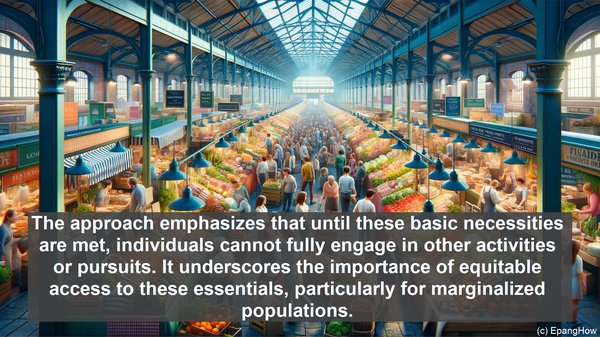Introduction: Unveiling the Approaches
Hello everyone! Welcome to our article on the basic needs approach and the human development approach. These two frameworks have been instrumental in shaping policies and interventions across various domains. While they share some commonalities, they also have distinct focuses and implications. Let’s dive in!

Basic Needs Approach: A Holistic Perspective
The basic needs approach centers around fulfilling the fundamental requirements for human well-being. These needs typically encompass food, water, shelter, healthcare, and education. The approach emphasizes that until these basic necessities are met, individuals cannot fully engage in other activities or pursuits. It underscores the importance of equitable access to these essentials, particularly for marginalized populations.
Human Development Approach: Beyond Material Well-being
In contrast, the human development approach takes a broader view. It not only considers material well-being but also focuses on aspects like education quality, healthcare accessibility, social inclusion, and political participation. The approach recognizes that development is not just about economic growth but also about enhancing people’s capabilities and freedoms. It emphasizes the need for empowering individuals and fostering an environment conducive to their overall growth and well-being.
Interplay and Complementarity
While the basic needs approach and the human development approach may seem distinct, they are not mutually exclusive. In fact, they often complement each other. For instance, ensuring access to quality education (a component of the human development approach) can contribute to addressing poverty and inequality (central concerns of the basic needs approach). Similarly, efforts to enhance healthcare infrastructure (basic needs approach) can have long-term implications for overall human development.

Implications for Policy and Practice
Understanding the nuances of these approaches is crucial for policymakers and practitioners. It helps in designing interventions that are comprehensive, context-specific, and sustainable. By combining elements of both frameworks, it is possible to create strategies that not only address immediate challenges but also pave the way for long-term development. Moreover, considering the interconnections between various dimensions of well-being can lead to more holistic and equitable outcomes.
